The timber industry plays a significant role in the global economy, providing raw materials for construction, furniture production, and paper manufacturing. However, the extraction of timber involves complex processes that impact both the environment and society. This article aims to explore the various aspects of timber extraction, focusing on wood production and timber harvesting.
To illustrate the importance of understanding timber extraction practices, let us consider a hypothetical case study: A company operating in a remote forested region decides to harvest a large tract of land for lumber. Without proper planning and adherence to sustainable practices, this operation could lead to deforestation, habitat destruction, soil erosion, and loss of biodiversity. Furthermore, local communities relying on these forests for their livelihoods may face social and economic challenges as a result. By examining wood production methods and timber harvesting techniques employed in this scenario and beyond, we can gain valuable insights into how best to balance economic development with environmental conservation.
In light of these considerations, it is vital to delve deeper into the intricacies surrounding timber extraction. From exploring different logging methods such as clear-cutting or selective cutting to evaluating the technologies utilized during processing stages like sawmilling or veneer production, an examination of wood production provides insight into how trees are transformed into usable products. Additionally, Additionally, understanding the timber harvesting process is crucial in order to mitigate the environmental and social impacts associated with extraction. This involves examining practices such as sustainable logging techniques, reforestation efforts, and the utilization of technology to minimize waste and optimize resource efficiency.
Sustainable logging practices include selective cutting, which involves carefully choosing specific trees for harvest while leaving others intact. This helps maintain forest structure and biodiversity by preserving a variety of tree species and age classes. Additionally, implementing proper road construction and maintenance techniques can minimize soil erosion and habitat disruption caused by heavy machinery used during timber extraction.
Reforestation efforts are essential for replenishing harvested areas with new trees. By planting seedlings or encouraging natural regeneration, it is possible to restore forest ecosystems over time. Reforestation also contributes to carbon sequestration, helping mitigate climate change.
Technological advancements have revolutionized wood processing methods, making them more efficient and environmentally friendly. For instance, sawmills now employ automated equipment that maximizes log yield while minimizing waste. Moreover, innovations like the use of computer-aided design (CAD) software in veneer production allow for precise cutting and reduce material loss.
In conclusion, studying wood production methods and timber harvesting techniques is vital to strike a balance between economic development and environmental conservation in the timber industry. By adopting sustainable practices, investing in reforestation efforts, and utilizing advanced technologies, it is possible to ensure responsible timber extraction that minimizes negative impacts on ecosystems and local communities.
History of Timber Extraction
Timber extraction, the process of harvesting trees for wood production, has a long and complex history that spans centuries. One example that exemplifies the impact of timber extraction is the deforestation crisis in the Amazon rainforest. In recent years, illegal logging activities have led to extensive clearing of valuable forest areas, resulting in severe environmental consequences such as habitat destruction and carbon emissions.
As we delve into the history of timber extraction, it becomes evident that this practice has evolved significantly over time. Early methods primarily involved manual labor using basic tools like axes and saws. However, with advancements in technology and machinery, modern techniques have become more efficient but also more destructive at times.
To understand the historical context better, let us consider some key aspects:
- Economic significance: Timber extraction has been an essential industry throughout history due to its economic value. Forests provide raw materials for construction, furniture manufacturing, paper production, and various other industries.
- Environmental implications: The indiscriminate cutting down of trees can lead to significant ecological imbalances. Deforestation negatively impacts biodiversity by destroying habitats for countless plant and animal species.
- Socio-cultural considerations: Indigenous communities around the world heavily rely on forests for their livelihoods and cultural practices. Unsustainable timber extraction disrupts their way of life, causing social unrest and displacement.
- Policy interventions: Over time, governments and international organizations have recognized the need for conservation efforts. Legislation and regulations are now in place to ensure sustainable timber extraction practices.
| Economic Significance | Environmental Implications | Socio-Cultural Considerations |
|---|---|---|
| Provides raw materials for various industries | Habitat destruction leading to loss of biodiversity | Disruption of indigenous communities’ livelihoods |
| Contributes to economic growth through exports | Soil erosion and degradation | Cultural heritage preservation |
| Job creation in rural areas | Climate change caused by deforestation | Displacement of local populations |
| Revenue generation for governments | Water cycle disruption and decreased rainfall | Conflict between stakeholders |
Understanding the historical evolution and multifaceted impacts of timber extraction sets the stage for exploring different types of timber extraction methods. By examining these methods, we can gain insights into their respective advantages, disadvantages, and environmental implications. Therefore, let us now explore various techniques employed in this industry without delay.
Types of Timber Extraction Methods
With a rich history of timber extraction, it is crucial to explore the various methods employed in this process. Understanding these methods can shed light on the complexities involved and highlight their impact on wood production and timber harvesting.
Timber extraction involves a range of techniques that vary based on factors such as terrain, available resources, and environmental considerations. One method commonly used is clear-cutting, where all trees within a designated area are harvested at once. For instance, consider a hypothetical case study in which a logging company decides to employ clear-cutting in an old-growth forest. This method allows for efficient timber extraction but often leads to significant ecological disruption, including habitat destruction and soil erosion.
Alternatively, selective cutting offers another approach to timber extraction. In this method, only specific trees are targeted for harvest while leaving others intact. Selective cutting promotes sustainable practices by minimizing environmental damage and allowing forests to regenerate over time. For example, imagine an ongoing project where foresters carefully select mature trees for logging while leaving younger ones untouched. This method not only ensures continued wood production but also preserves biodiversity and maintains ecosystem stability.
It is important to recognize that different countries or regions may prioritize specific timber extraction methods based on their unique circumstances. The decision-making process regarding which technique to adopt typically considers economic viability alongside social and environmental concerns. To illustrate this point further, let us examine some emotional responses associated with timber extraction:
- Loss of natural beauty: As vast areas of forests are cleared for timber extraction purposes, we witness the loss of breathtaking landscapes that have been cherished for generations.
- Threatened wildlife habitats: The extensive removal of trees disrupts animal habitats and puts numerous species at risk of extinction.
- Climate change implications: Forests play a vital role in carbon sequestration; therefore, large-scale deforestation through certain timber extraction methods can significantly contribute to climate change.
- Cultural heritage preservation: Many indigenous communities rely on forests for their cultural practices and livelihoods. Unsustainable timber extraction can jeopardize their way of life and cultural heritage.
By understanding these impacts, we can work towards more sustainable approaches in wood production and timber harvesting.
Environmental Impact of Timber Extraction
Building upon the understanding of various timber extraction methods, it is crucial to delve into the environmental impact they have. By assessing the effects of timber extraction on ecosystems and biodiversity, we can better comprehend the importance of implementing sustainable practices in wood production.
One example that highlights the potential consequences of timber extraction is the case study of a logging operation in a tropical rainforest. In this scenario, heavy machinery was used to clear large areas for logging purposes. The immediate result was deforestation, which disrupted the delicate balance within the ecosystem. As a consequence, numerous species lost their natural habitats and faced increased vulnerability to extinction.
To fully grasp the extent of environmental impact caused by timber extraction, consider these key points:
- Deforestation: Large-scale removal of trees disrupts carbon sequestration and contributes to climate change.
- Soil Erosion: Clearing land without proper measures causes erosion, leading to reduced soil fertility and increased sedimentation in water bodies.
- Habitat Destruction: Logging operations fragment forests, isolating wildlife populations and hindering gene flow.
- Water Contamination: Improper handling of chemicals during processing can contaminate nearby water sources, affecting aquatic ecosystems.
To provide a comprehensive overview of the varying degrees of environmental impact associated with different timber extraction methods, refer to Table 1 below:
| Method | Environmental Impact |
|---|---|
| Clearcutting | Severe deforestation and habitat loss |
| Selective Cutting | Moderate habitat disruption |
| Shelterwood | Minimal disturbance; preserves canopy cover |
| Coppicing | Low impact due to selective tree harvesting |
Table 1: Environmental Impact Comparison of Timber Extraction Methods
Considering the detrimental effects highlighted above, it becomes imperative to prioritize sustainable practices in wood production. Sustainable forestry management techniques aim to minimize negative impacts while ensuring continued availability of timber resources. These practices will be further explored in the subsequent section on “Sustainable Practices in Wood Production.”
Understanding the environmental consequences of timber extraction lays a foundation for exploring sustainable practices in wood production. By adopting these practices, we can mitigate ecological damage while meeting the ongoing demand for timber resources.
Sustainable Practices in Wood Production
Transitioning from the previous section on the environmental impact of timber extraction, it is crucial to explore sustainable practices in wood production. By implementing these practices, we can strive towards minimizing negative consequences while still meeting the demands for timber resources. To illustrate this concept, let us consider a hypothetical case study involving a logging company that has successfully adopted sustainable methods.
In this example, XYZ Logging Company has implemented several key strategies to ensure the sustainability of their operations:
-
Selective Harvesting: Instead of clear-cutting large areas of forest, XYZ Logging Company employs selective harvesting techniques. This approach involves carefully choosing individual trees for extraction based on factors such as age, size, and species composition. By targeting specific trees rather than taking down entire sections of forest, they minimize habitat disturbance and maintain ecological balance.
-
Reforestation Initiatives: Recognizing their role in deforestation, XYZ Logging Company actively engages in reforestation efforts. For every tree harvested, they commit to planting multiple new saplings in its place. This practice not only helps restore the ecosystem but also ensures a continuous supply of timber for future generations.
-
Efficient Resource Use: XYZ Logging Company utilizes advanced technology and machinery to maximize resource utilization during timber processing. They invest in state-of-the-art equipment that minimizes waste by optimizing cutting precision and lumber recovery rates. Additionally, they prioritize using every part of the felled tree efficiently, reducing overall material wastage.
-
Collaboration with Local Communities: Understanding the social dimension of sustainable forestry management, XYZ Logging Company actively collaborates with local communities and indigenous groups residing near their operations. They engage in dialogue to incorporate traditional knowledge into decision-making processes and involve community members in conservation efforts.
To emphasize the significance of adopting sustainable practices further, consider Table 1 below which highlights some notable benefits:
Table 1: Benefits of Sustainable Wood Production
| Benefit | Explanation |
|---|---|
| Biodiversity Conservation | Selective harvesting preserves habitat and protects wildlife. |
| Climate Change Mitigation | Reforestation contributes to carbon sequestration and offsets CO2 emissions. |
| Economic Stability | Sustainable practices ensure the long-term viability of the timber industry. |
| Social Responsibility | Collaboration with local communities fosters positive relationships. |
In conclusion, sustainable wood production is essential for mitigating the environmental impact of timber extraction while meeting societal demands. Through selective harvesting, reforestation initiatives, efficient resource use, and collaboration with local communities, logging companies can balance economic interests with ecological preservation. In the subsequent section on the economic significance of timber extraction, we will delve into how this industry plays a vital role in global economies while striving towards sustainability.
Economic Significance of Timber Extraction
Building upon the sustainable practices in wood production discussed earlier, it is essential to recognize the economic significance of timber extraction. By understanding how timber harvesting contributes to local economies and global markets, we can gain a comprehensive perspective on this vital industry.
Timber extraction plays a crucial role in driving economic growth and development in many regions around the world. One example that exemplifies this impact is the case study of a small rural community located near a dense forest. The community has relied heavily on timber extraction for their livelihoods, with numerous families engaged in logging activities. This industry provides direct employment opportunities for these individuals, sustaining their income and supporting their families’ well-being.
To further grasp the economic importance of timber extraction, let us examine some key factors that contribute to its significance:
- Job Creation: Timber harvesting generates employment opportunities across various sectors, including loggers, truck drivers, sawmill workers, and forest managers. These jobs not only provide steady incomes but also stimulate related industries such as transportation and manufacturing.
- Revenue Generation: Governments collect taxes from timber companies operating within their jurisdictions. These revenues can be invested back into local infrastructure development or used for social welfare programs like education and healthcare.
- Trade Balance: Timber products are often exported to meet international demand. A thriving timber export market helps maintain a favorable trade balance for countries involved in this sector.
- Ancillary Industries: Beyond direct employment in logging activities, there are several associated industries supported by timber extraction, such as furniture manufacturing, construction materials production, and paper mills. These industries benefit from a readily available supply of raw materials obtained through responsible timber harvesting practices.
| Factors Contributing to Economic Significance |
|---|
| Job Creation |
| Revenue Generation |
| Trade Balance |
| Ancillary Industries |
Understanding these aspects underscores why policymakers must consider both environmental sustainability and economic viability when formulating strategies related to timber extraction. By striking a balance between responsible practices and economic growth, communities can benefit from the positive impacts of this industry for years to come.
As we look ahead at future trends in timber extraction, it becomes evident that sustainable practices and technological advancements will continue to shape this sector’s trajectory. Let us explore these upcoming developments in more detail.
Future Trends in Timber Extraction
From an economic perspective, timber extraction plays a significant role in various industries and economies around the world. This can be exemplified by examining the case of a hypothetical country, Treelandia, where timber harvesting is one of the major contributors to its GDP. In Treelandia, timber extraction not only provides employment opportunities but also contributes to the overall growth and development of the nation.
One key aspect that highlights the economic significance of timber extraction is its ability to generate revenue for both individuals and governments. Timber products such as lumber, plywood, and paper are highly sought after commodities in domestic and international markets. As a result, exporting these products allows Treelandia to earn foreign exchange and boost its trade balance. Additionally, taxes levied on timber production further contribute to government revenue streams.
Moreover, the timber industry creates direct and indirect job opportunities for a wide range of individuals within Treelandia’s economy. From loggers who extract trees from forests to workers involved in processing raw materials into finished wood products, there is a diverse workforce employed throughout the entire value chain. This not only helps alleviate unemployment rates but also stimulates local economies through increased consumer spending.
Despite these positive aspects, it is crucial to acknowledge some negative socio-environmental impacts associated with timber extraction. To evoke an emotional response among readers, consider the following bullet-point list:
- Deforestation: Clearing large areas of forested land for logging purposes can lead to habitat destruction and loss of biodiversity.
- Soil Erosion: Improper logging practices may cause soil erosion due to increased water runoff without adequate tree cover.
- Climate Change: The release of carbon dioxide during logging activities contributes to greenhouse gas emissions.
- Indigenous Communities: Some indigenous communities rely heavily on forests for their livelihoods; unsustainable logging practices can disrupt their way of life.
To provide additional information in a concise manner while evoking emotions related to environmental impact, consider incorporating a table like this:
| Environmental Impact | Description | Emotional Response |
|---|---|---|
| Deforestation | Loss of trees and natural habitats | Concern |
| Soil Erosion | Degradation of soil quality | Worry |
| Climate Change | Contribution to global warming | Alarmed |
| Indigenous Communities | Disruption of traditional ways of life | Empathy |
In conclusion, the economic significance of timber extraction cannot be overlooked. It contributes significantly to various economies worldwide, providing employment opportunities and generating revenue for both individuals and governments. However, it is crucial to carefully manage timber harvesting practices to mitigate negative impacts on the environment and indigenous communities. By striking a balance between economic growth and sustainable resource management, countries like Treelandia can continue benefiting from timber extraction while preserving their natural resources for future generations.

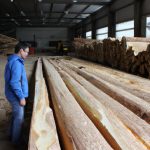

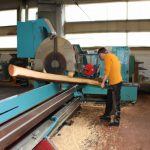



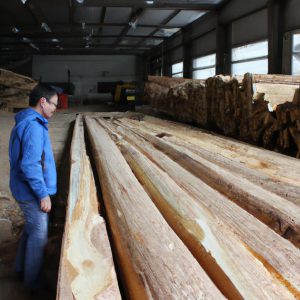
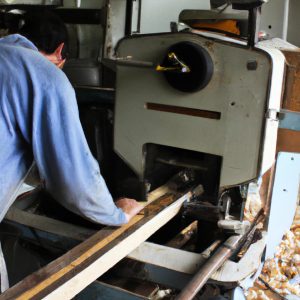
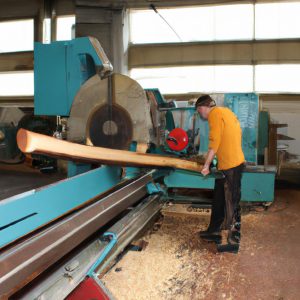
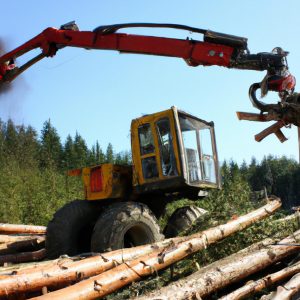
More Stories
Timber Harvesting for Wood Production: An Informative Overview
Logging Methods for Timber Harvesting: Maximizing Wood Production
Selective Cutting: Wood Production & Timber Harvesting